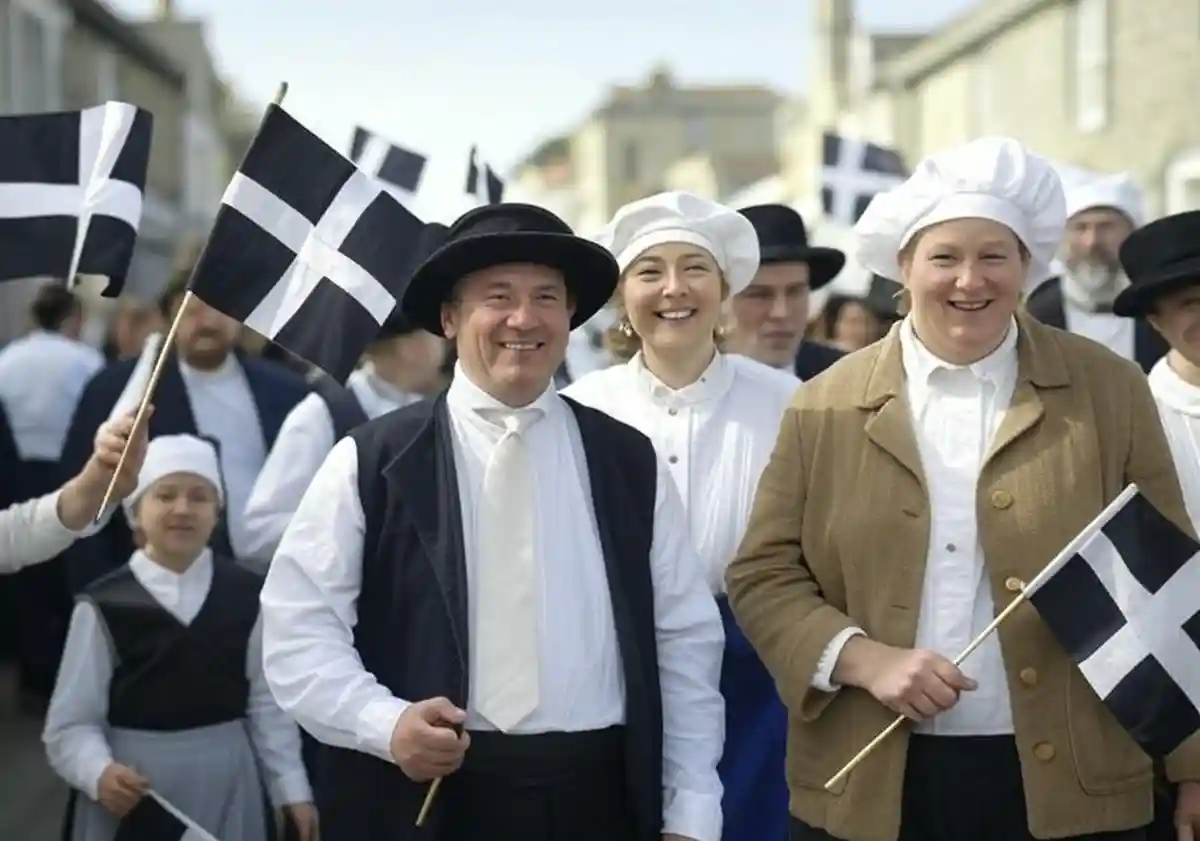St. Piran’s Day, celebrated every year on March 5th, honors St. Piran, the patron saint of Cornwall, a region in the southwest of England. The day is a significant cultural and historical event for the Cornish people, and it is celebrated with various local traditions, including parades, festivals, and music. St. Piran’s Day has become a symbol of Cornish pride and heritage, bringing people together to celebrate their unique history and identity.
The festival is not just a religious observance but also a reflection of Cornwall’s strong community spirit and distinct culture. From its origins as a Christian feast day to its modern-day celebrations, St. Piran’s Day offers a fascinating look into Cornwall’s rich history and its continued importance in contemporary times.
Key Details about St. Piran’s Day
| Key Fact | Details |
|---|---|
| Date | March 5th each year |
| Patron Saint | St. Piran |
| Location of Celebrations | Primarily in Cornwall, UK |
| Key Traditions | Parades, festivals, Cornish food, music |
| Symbol | Cornish flag (black and white) |
| Significance | Celebration of Cornish culture and pride |
| Historical Origins | St. Piran was an Irish missionary who is believed to have brought Christianity to Cornwall in the 5th century. |
History of St. Piran’s Day
St. Piran is a highly revered figure in Cornish history. According to legend, he was an Irish monk who was exiled to Cornwall, where he is said to have performed miracles, including the discovery of tin. St. Piran’s connection with Cornwall is especially tied to the tin mining industry, which has been a major part of the region’s history. His life and deeds continue to inspire the Cornish people, who celebrate his legacy on this special day.
St. Piran’s Day also holds historical importance in terms of Cornwall’s identity and independence. For many years, it was a day for Cornish people to express their pride in their heritage, even during times when Cornwall’s culture faced challenges.
Celebrations and Traditions
St. Piran’s Day is marked by a variety of celebrations, with the most popular being the parades that take place across Cornwall. These parades often feature people dressed in traditional Cornish attire, marching bands, and the waving of the Cornish flag, which is a black and white cross. In addition to the parades, people enjoy Cornish food and drink, including pasties and local ales.
Other festivities include musical performances, storytelling, and sometimes, a ceremonial “Blessing of the Cornish Flag.” The day is not just about honoring St. Piran but also about celebrating the vibrant culture of Cornwall, its people, and its history.
How to Celebrate St. Piran’s Day
If you’re in Cornwall during this time, there are plenty of ways to participate in the festivities. The most common way is to attend a local parade or gathering, where you can enjoy the festive atmosphere and immerse yourself in Cornish culture. You can also take the opportunity to visit historical landmarks in Cornwall that are connected to St. Piran.
For those outside of Cornwall, celebrating St. Piran’s Day can be as simple as cooking a Cornish dish at home or learning more about the history of the region. Sharing stories about St. Piran and his contributions to Cornwall can also be a meaningful way to honor the day.
Key Reminders
- St. Piran’s Day is celebrated on March 5th each year.
- The day honors St. Piran, the patron saint of Cornwall.
- Cornish pride is a central theme of the celebrations, which include parades, music, and food.
- Cornwall’s history, particularly its tin mining heritage, is an important part of St. Piran’s legacy.
Frequently Asked Questions
Who was St. Piran, and why is he important to Cornwall?
St. Piran was an Irish monk who is believed to have brought Christianity to Cornwall. He is most famous for his connection to the region’s tin mining industry and is considered the patron saint of Cornwall. His day is celebrated with pride in the region.
When is St. Piran’s Day celebrated?
St. Piran’s Day is celebrated on March 5th each year.
What are some traditional ways to celebrate St. Piran’s Day?
People celebrate with parades, festivals, traditional Cornish food like pasties, and by proudly displaying the Cornish flag.
Why is the Cornish flag black and white?
The Cornish flag, which features a white cross on a black background, symbolizes the Cornish people’s pride and history, with the colors reflecting the region’s mining heritage.
Can I celebrate St. Piran’s Day outside of Cornwall?
Absolutely! Even outside Cornwall, you can celebrate St. Piran’s Day by learning about Cornwall’s history, cooking traditional Cornish dishes, or participating in local celebrations or online events.

























